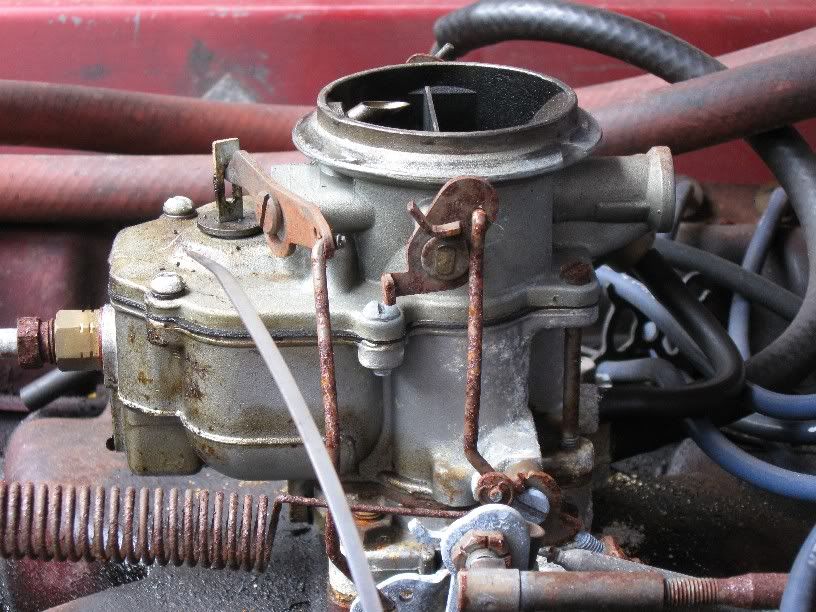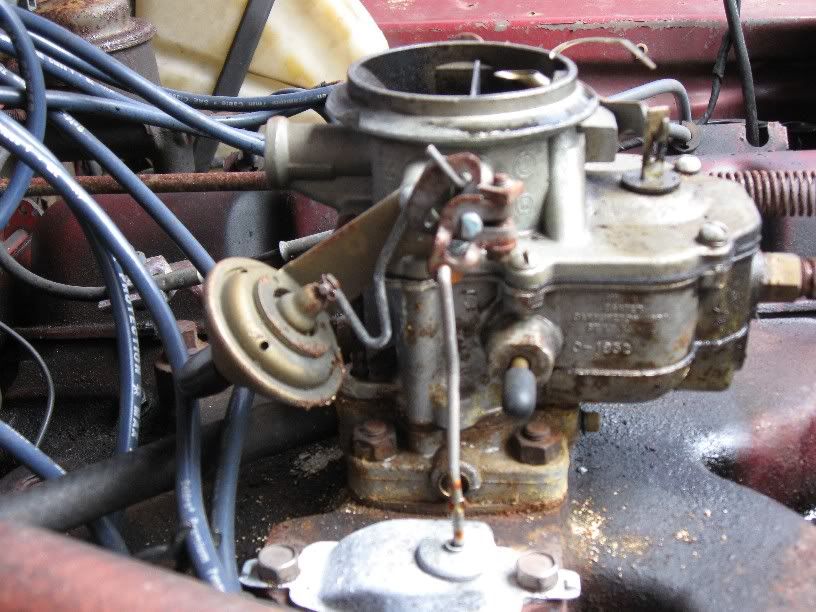Oops, not quite. The carburetor number you need is not a serial number, it is a
type number, and it is not stamped on the carb base near a mounting bolt (or anywhere else). There are numbers cast into various parts of the carb, but they are casting ID numbers not useful for identifying the carburetor assembly you're looking at. Carter carb type numbers are stamped on a thin aluminum tag attached to the air horn (near the
top of the carb) by one of the bowl screws. This is not as good a method as Holley or Bendix/Stromberg (those makes of carburetor had the carb type number stamped into the carb itself). The Carter ID tags can get broken off or left off during a carb rebuild, and then the carb is almost impossible to identify with certainty.
Mrmopartech's numbers are correct, though; original equipment on a '64 273 was a Carter BBD 3767 (w/manual transmission) or BBD 3768 (w/automatic transmission). The best quality mass-market kits are made by
Walker; you'd need a kit number 15284C. A much(!) more complete kit, with jets and step-up rods and other components not included in the ordinary "gaskets and seals" type of mass market kit, can be had from
The Carburetor Shop.
Check your carburetor's throttle body for shaft wear; you will almost certainly find it. This will spoil carburetor operation and you will need to correct it if you seek to restore new-carb levels of driveability, idle quality, performance, and fuel economy. There's no prefab bushing to replace; this is a precision machining operation -- not just a simple matter of removing a worn-out bushing and installing a new one. From the factory, the steel throttle shaft bears directly on the aluminum throttle body itself. With use and age, the hole in the throttle body gets wallered-out (a Texas term meaning "wallowed out") and air leaks in at the throttle shaft/body junction. The repair operation consists of carefully marking the placement and orientation of the throttle plates relative to the shaft and body, removing them, removing the shaft, overboring the throttle body, and installing and reaming bronze, brass or Delrin bushings to restore a tight fit that still permits free movement of the throttle shaft.
It's been quite awhile since I had one of these done. I used to patronize G&S Auto and Machine, who advertised the service in Hemmings and happened to be local to me when I lived in Denver. They charged about $35 to $45 depending on the type of carburetor, and offered fast turnaround. 303-795-1412; they may still be rebushing throttle bodies (or they may no longer exist). They were far from the only shop to do this kind of work, though; it's not a difficult service to find.
Carburetor operation and repair manuals (including Carter BBD) and links to training movies and carb repair/modification threads are posted
here for free download.






















